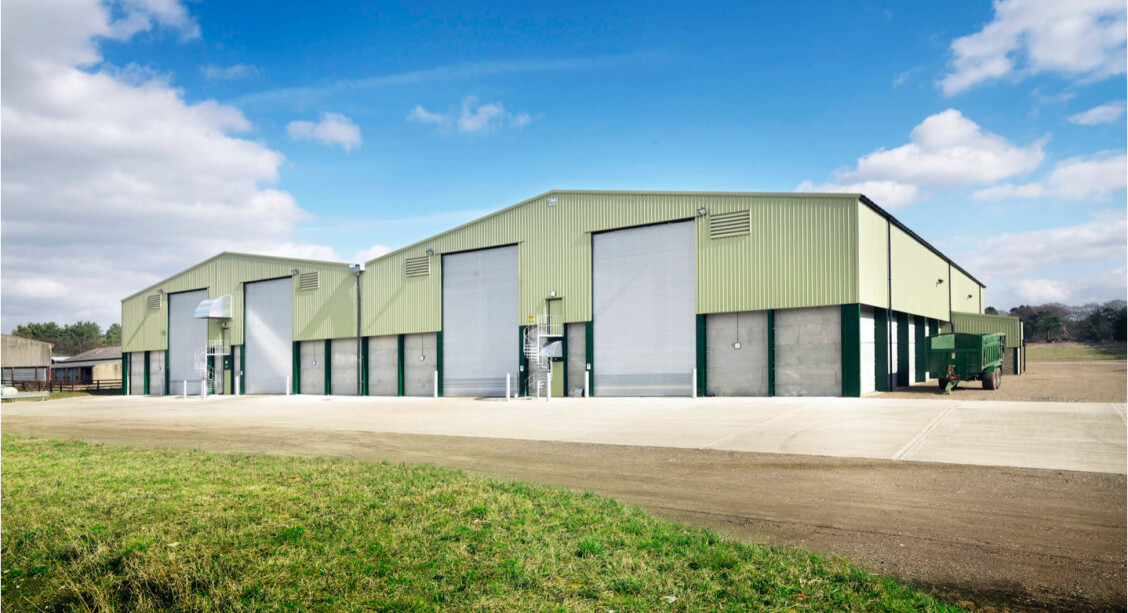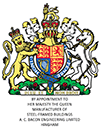
Environment & Social Review
We review our processes to frame our environmental and social strategy
Introduction
A. C. Bacon Engineering Ltd (the company) converts raw steel into steel framed buildings. Steel framed buildings are intrinsically 'green' environmentally friendly buildings, as they can be taken down almost entirely and their materials recycled. Concrete and steel both emit carbon dioxide in their production. If all steel used in the building project were new and made from imported ore in a blast furnace, then the carbon content within the steel would be as high as concrete. However, steel is nearly 100% recyclable and the re-use gives off much less carbon. Therefore, steel buildings & structures embody less carbon than their concrete counterparts (40% of steel is deemed to be 'new', and 60% is recycled; yet almost all embedded steel will be recycled).
The company has signed up to the Prince’s Mayday network which will help us to gauge our environmental processes and social values progress and frame our future environment and social strategy.
The company uses its monthly invoices to obtain figures for energy consumption and cost data. This data is used as a baseline for reviewing costs over future years. We measure electrical consumption, white and red diesel, heating oil and water. We are committed to looking for savings by reducing our consumption where possible.
The following are some key issues that have been identified:
Climate change: energy & fuel use
The company owns a fleet of construction vehicles comprising lorries, cranes & mobile elevated work platforms. All vehicles are chosen because they are energy efficient and emit low CO². The company has a policy of regularly replacing its fleet and servicing it on a regular basis for optimum fuel efficiency. The company works predominantly in East Anglia, therefore existing travel footprint is not significant. The majority of employees live in the town of Hingham where the company is located and the surrounding area; lift sharing is common. There is little convenient public transport.
The company has modern, design-award-winning offices and workshops which have been built to a very high standard. The older workshops have been re-roofed, insulation upgraded and an increased percentage of rooflights. Solar panels have been investigated but are uneconomical due to roofs running North/South.
Employees are regularly reminded about the need to turn off lights, plus other energy saving initiatives. Lights, computers and heating are turned off when not in use. Staff are reminded of this by email and nominated colleagues check at the end of the day. There is a staff suggestion scheme for energy reduction in place.
TARGET: The company has an on-going commitment to reduce electricity consumption year-on-year, the difficulty being to pro-rata according to manufacturing fluctuations. Electricity is used for lighting, heating and powering machines and equipment.
Chemicals: cleaning products & paint
Our finished steel is either spray painted or hot-dip galvanised. If it is to be hot-dip galvanised, we outsource this process to a local company based in Great Yarmouth whenever we can, although there are size limitations. We do the majority of our painting at our premises. The company has elected to use the solvent reduction scheme compliance to satisfy the requirements of the Solvent Emission Directives. We calculate our actual solvent emissions annually by identifying the following:
- Total VOC’s consumed by the process in the previous 12 months, including a breakdown of the thinners, cleaning solvents and coatings.
- Total solids in the coatings used by the process.
- Volume of solvent removed as waste.
TARGET: To ensure ongoing reduction in solvent use, the company commits that it will not:
- Replace a low or no organic solvent coating system with a conventional high organic solvent coating system.
- Introduce a conventional high organic solvent coating system into a process/activity.
- Introduce a conventional high organic solvent coating system onto a product where it was not in use before.
- Introduce high solids formulations which have no beneficial effect on the product but increase the solids used, except where a reduction in the overall VOC emissions can be demonstrated.
Sourcing products locally where possible
The company needs to make purchases in accordance with strict price and quality guidelines. However, if the product can be bought locally meeting these requirements we will do so. We also hire plant local to the site of construction.
TARGET: To where possible, increase the amount of products sourced locally.
Supply chain
Where practical we give preference to companies who can supply us with the least environmental impact.
Waste management
The steel fabrication process generates ‘waste steel’ in the form of offcuts; this is sold to recyclers. This includes shot-blasting dust and metal punchings. The company has software programme which will enable us to optimise our purchase of materials, nesting, workshop cutting and punching. These activities will combine to help us to reduce the overall amount of waste steel we generate.
TARGET: To reduce the amount of waste steel generated year-on-year.
After our buildings are erected, we will clear the site of any debris such as cladding offcuts, bolts and packaging as part of the snagging process. We will always reuse materials such as bolts and cladding as much as practicable.
Staff are encouraged to print on both sides of paper and to print only necessary documents/emails.
We are investigating the harvesting of rainwater for our own use.
Our waste management policy is driven by our commitment to reduce, re-use and recyle
David Bacon
Managing Director

